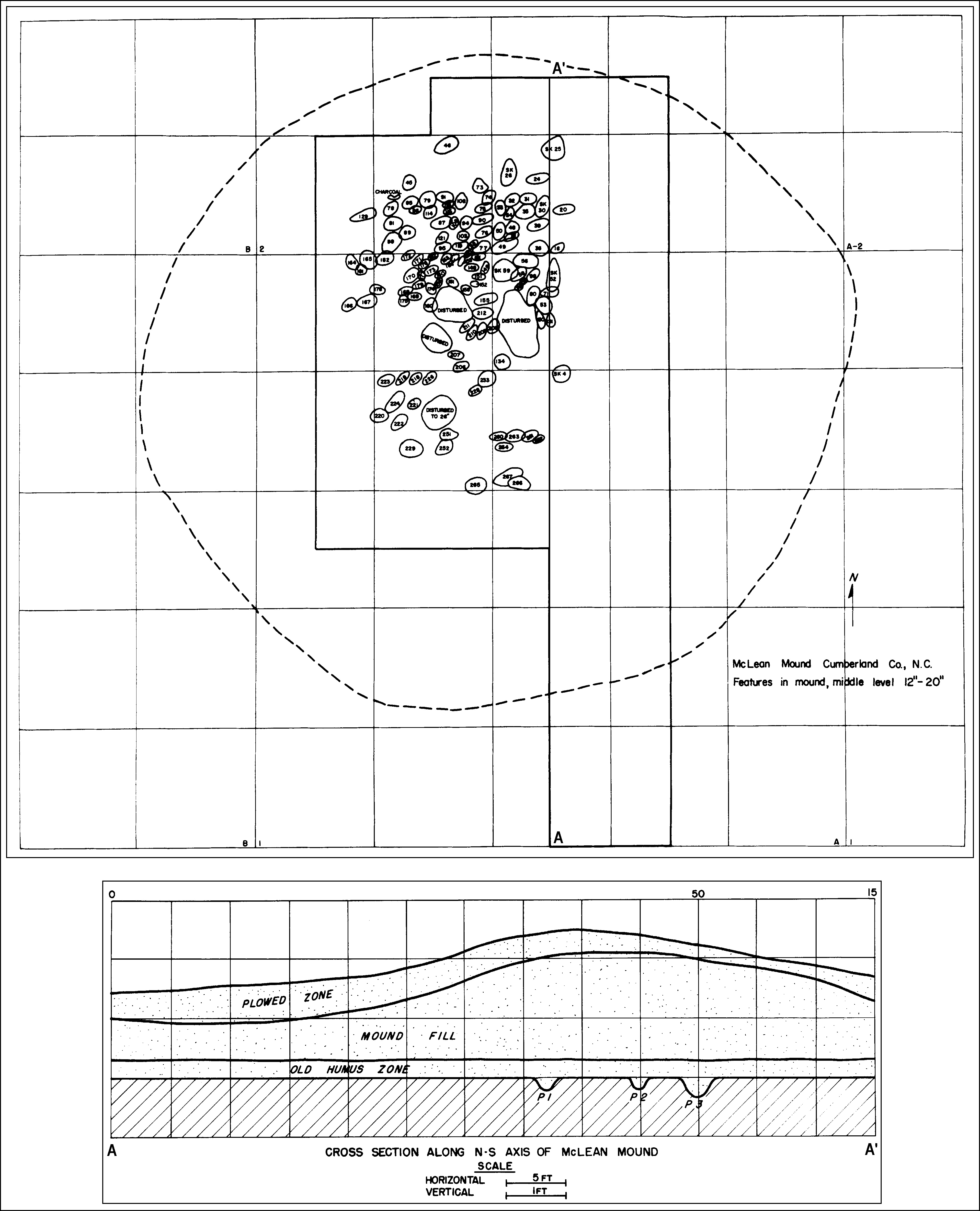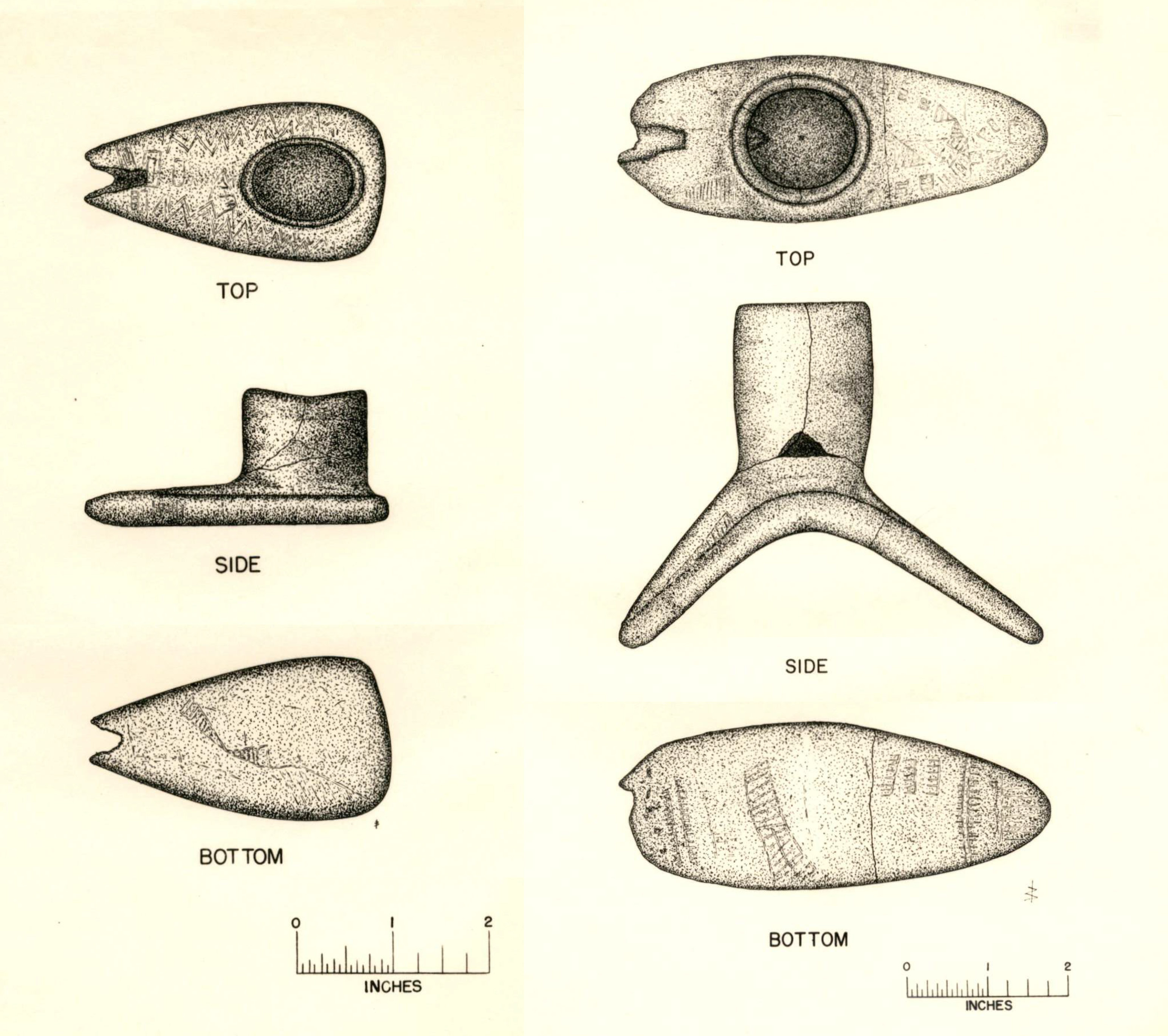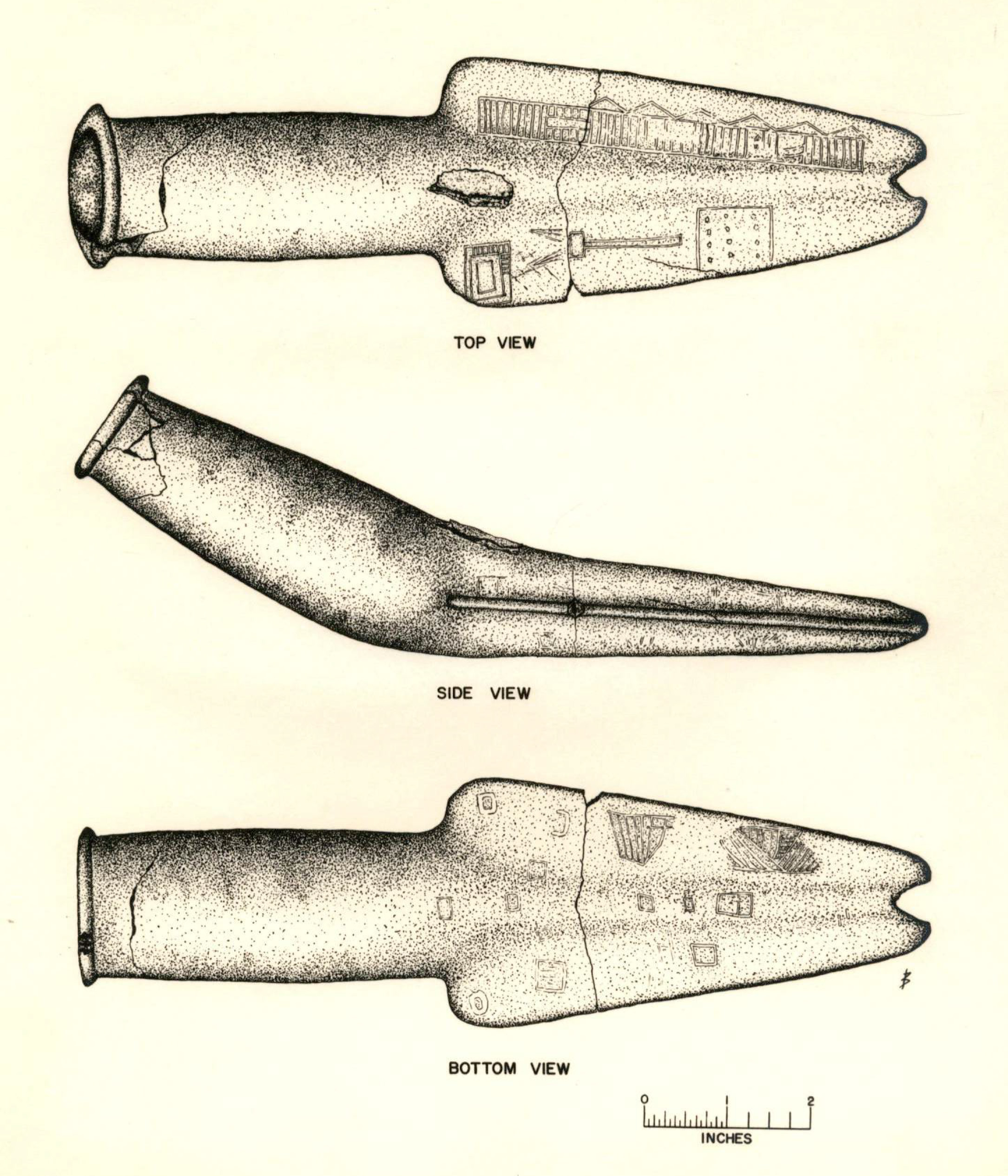McLean Mound (Cumberland County)

McLean Mound (31CD7) is a large sand mound that was excavated in 1961 by Howard MacCord, an Army officer who was stationed at Fort Bragg. The mound is located in Cumberland County near the Cape Fear River. McLean Mound is particularly important because it represents the most thoroughly studied sand mound in North Carolina. Most of the widespread, low, sand burial mounds of the southern inner coastal plain are thought to have been associated with the Cape Fear phase of the Woodland period (A.D. 1-1000). Unfortunately, because most sand mounds were severely disturbed by relic collectors before being professionally excavated, we have very little reliable data about them. Most are circular in outline, low in profile, and contain secondary burials and cremations. They are generally between 25 ft and 50 ft in diameter and about 3 feet high. Some were reportedly as high as 15 feet before being plowed down in the historic period.

All the sand burial mounds known to archaeologists were on low sand ridges located some distance away from village sites. The numbers of individuals interred within sand burial mounds range from 10 to over 300. The secondary burials so common to these mounds consist of individuals whose flesh was partially or wholly removed prior to their interment (burial). This was done through placement in charnel houses or sometimes on scaffolds where bodies lay for a period of time to decompose. Periodically, the charnel houses were cleaned out to make room for more bodies. Bones were collected in bundles and the bundles were then buried in mounds or other mass graves. While archaeologists in North Carolina have never identified the remains of a charnel house or scaffold, charnel houses are well known from descriptions of early settlers along the coasts.
History of Excavations
McLean mound was first visited by amateur archaeologists in the early twentieth century. At this time it is described as being roughly 6 feet high and covered with trees. By the time it was excavated by MacCord, it had been under cultivation for many years and had been much reduced in height. In 1961, MacCord excavated a 1,400 square foot area in the center of McLean Mound; the diameter of the mound’s base at this time was about 49 ft x 66 ft. While MacCord was not a professional archaeologist, he was aided and advised by professional archaeologists including Joffre Coe, Stanley South, and C.G. Holland. Excavation was done in 5 x 5 ft units in 4-inch levels, but the stratigraphy was extremely complex due to superimposed reinterments and poor preservation.
Sand Burial Mounds in North Carolina

The North Carolina Sandhills and southern Coastal Plain are unique due to the presence of sand burial mounds dating to the Woodland period. Burial mounds from the same period have not been found in the Piedmont, west of the Coastal Plain Sandhills, or north of the New River. McLean is particularly important because most other sand burial mounds were excavated during the late nineteenth and early twentieth centuries in ways that hinder archaeological interpretations. It does appear, however, that sand burial mounds were part of a regional social complex dating primarily to the late Middle Woodland period and geographically centered around the Cape Fear River Valley in the early Late Woodland period.

McLean Mound contained a large number of individuals represented by extremely fragmentary remains; MacCord reported skeletal elements that represented over 300 people. Fifty individuals were found in the plow zone, while the remains of another 268 burials were found within the mound itself; most of these individuals consisted of secondary bundles. Many artifacts thought to be grave offerings were also recovered during excavations. Some were purposefully placed with individual burials, while others were randomly scattered throughout the mounds. These grave offerings included bone and shell beads, chipped-stone and antler points, pottery sherds, animal bones, celts (hoe or axe-like stone tools), abrading stones (used to work bone, shell, wood, and stone), and paint pigments. Additionally, fragments of at least 25 stone smoking pipes were recovered, of which eight could be reconstructed. All the pipes were made of chloritic shist except one that was carved from steatite (also called soapstone, a relatively soft rock). Some of the pipes look very similar to the platform pipes known from Middle Woodland Hopewell sites in the Ohio Valley.

Pottery has been found in most of the burial mounds on the southern Coastal Plains, but the roughly 200 sherds recovered from McLean Mound represent a giant leap forward from the handful found on other sites. Due to their interpretive potential, the ceramic assemblage from McLean Mound was reanalyzed by Joseph Herbert during the 2000s. Overall, Herbert’s analysis suggests a minimum of 33 vessels, a majority of which were decorated by hitting the malleable, formed clay with coarse fabric that would have been wrapped around a paddle. The most frequent ceramic forms Herbert found were bowls and cups. These were probably used as serving vessels and may represent part of a burial ceremony. The range of ceramic types and forms at McLean suggests connections to the Mississippian Pee Dee and Savannah traditions located south and west of the North Carolina Coastal Plain. Additionally, some of the pottery recovered indicates that the McLean Mound may have been used for interments for several hundred years after MacCord’s radiocarbon date (A.D. 815 to A.D. 1270). Two more carbon samples were submitted by Herbert for new date ranges – one piece of charcoal reportedly found within a cremation and one sample from soot on a sherd found in general mound fill. The first sample returned a date of A.D. 1030 to A.D. 1410 while the soot sample returned a date of A.D. 675 to A.D. 880. Based on these dates, Herbert interprets the McLean Mound as a Late Woodland repository of secondary burials, representing around four generations of periodic use.
Sources
Herbert, Joseph M.
2009 • Woodland Potters and Archaeological Ceramics of the North Carolina Coast. University of Alabama Press, Tuscaloosa.
MacCord, Howard A., Sr.
1966 • The McLean Mound, Cumberland County, North Carolina. Southern Indian Studies 18:3-45.
Ward, Trawick H., and R.P. Stephen Davis, Jr.
1999 • Time Before History: The Archaeology of North Carolina. University of North Carolina Press, Chapel Hill.
